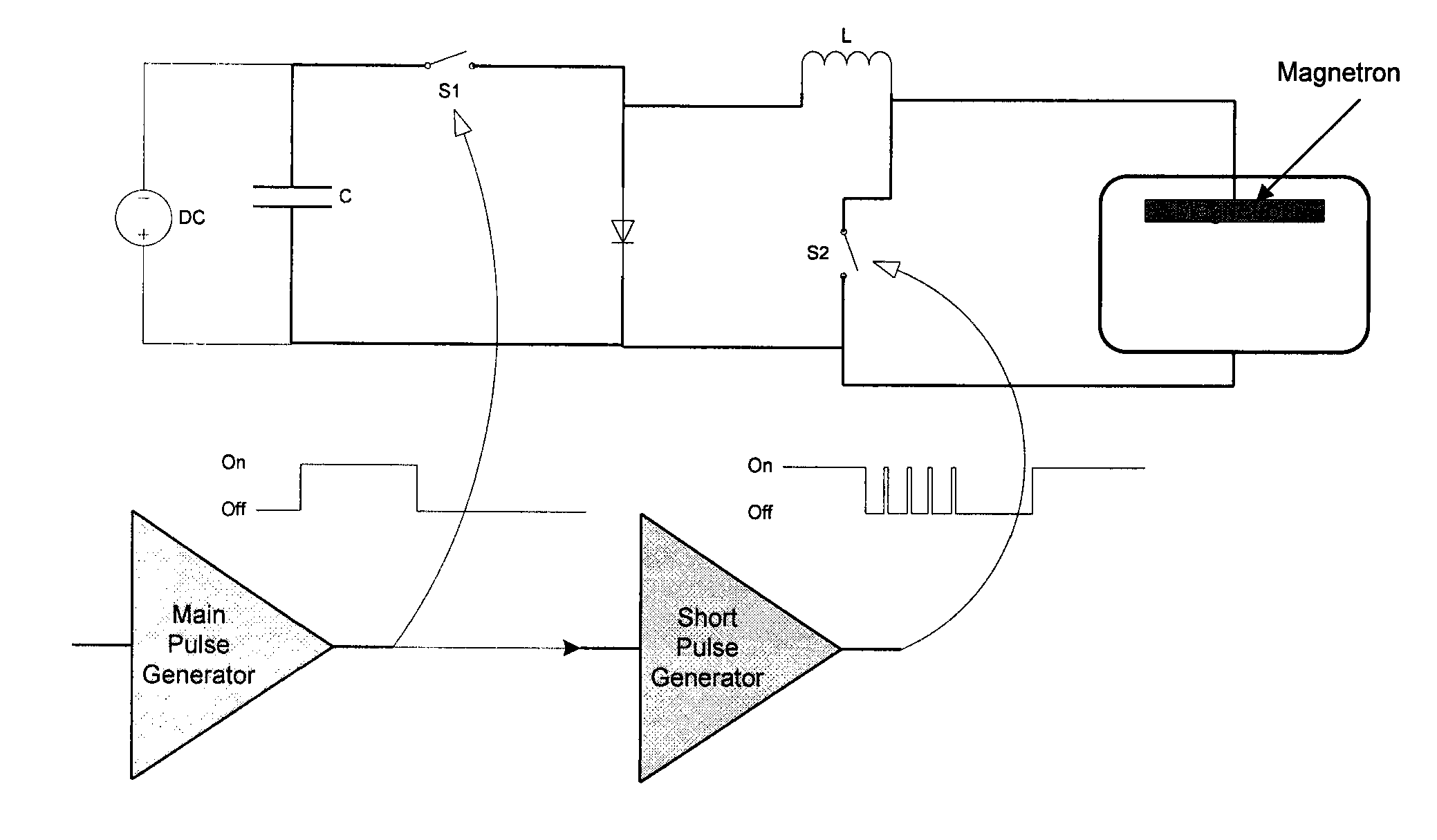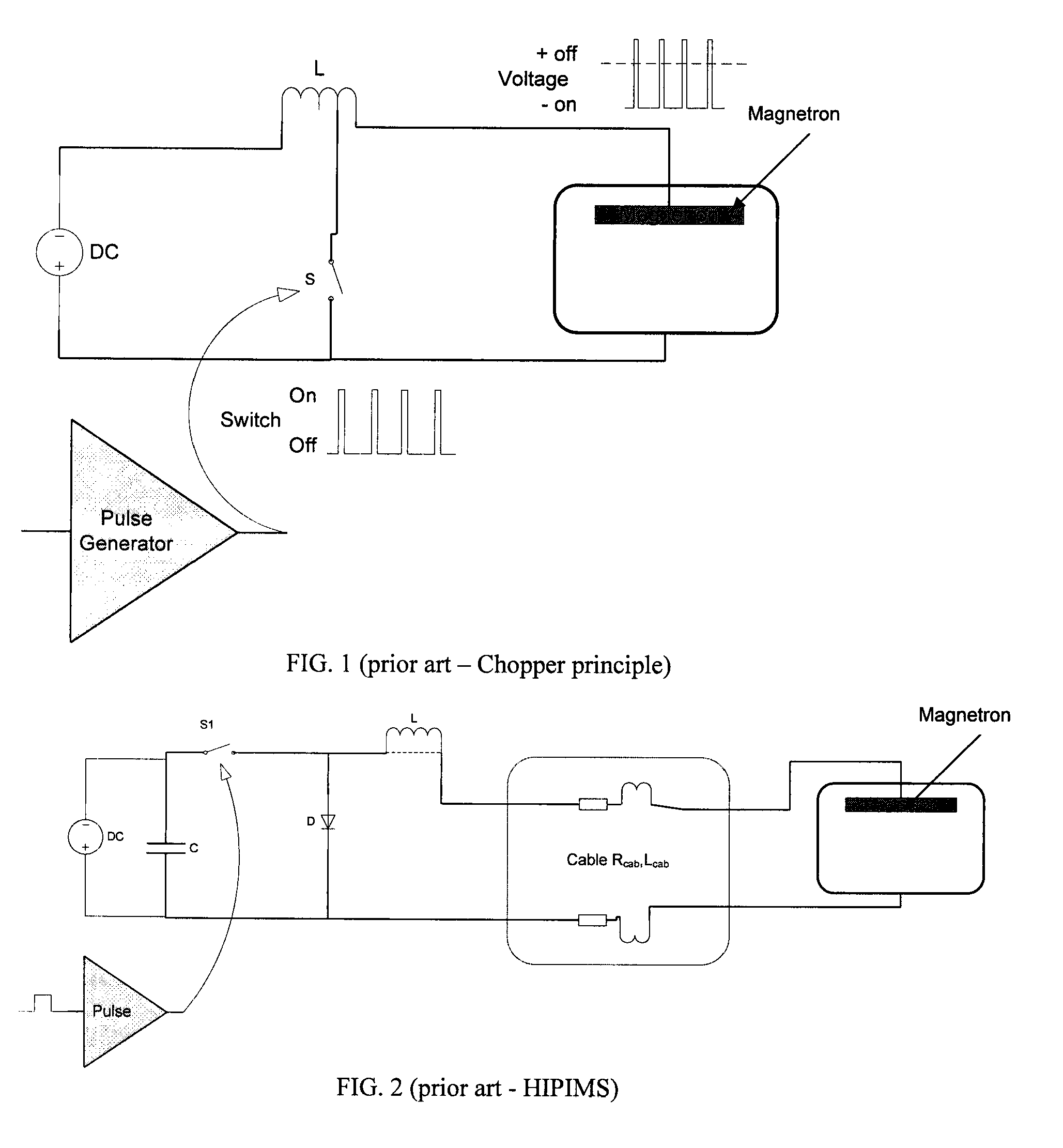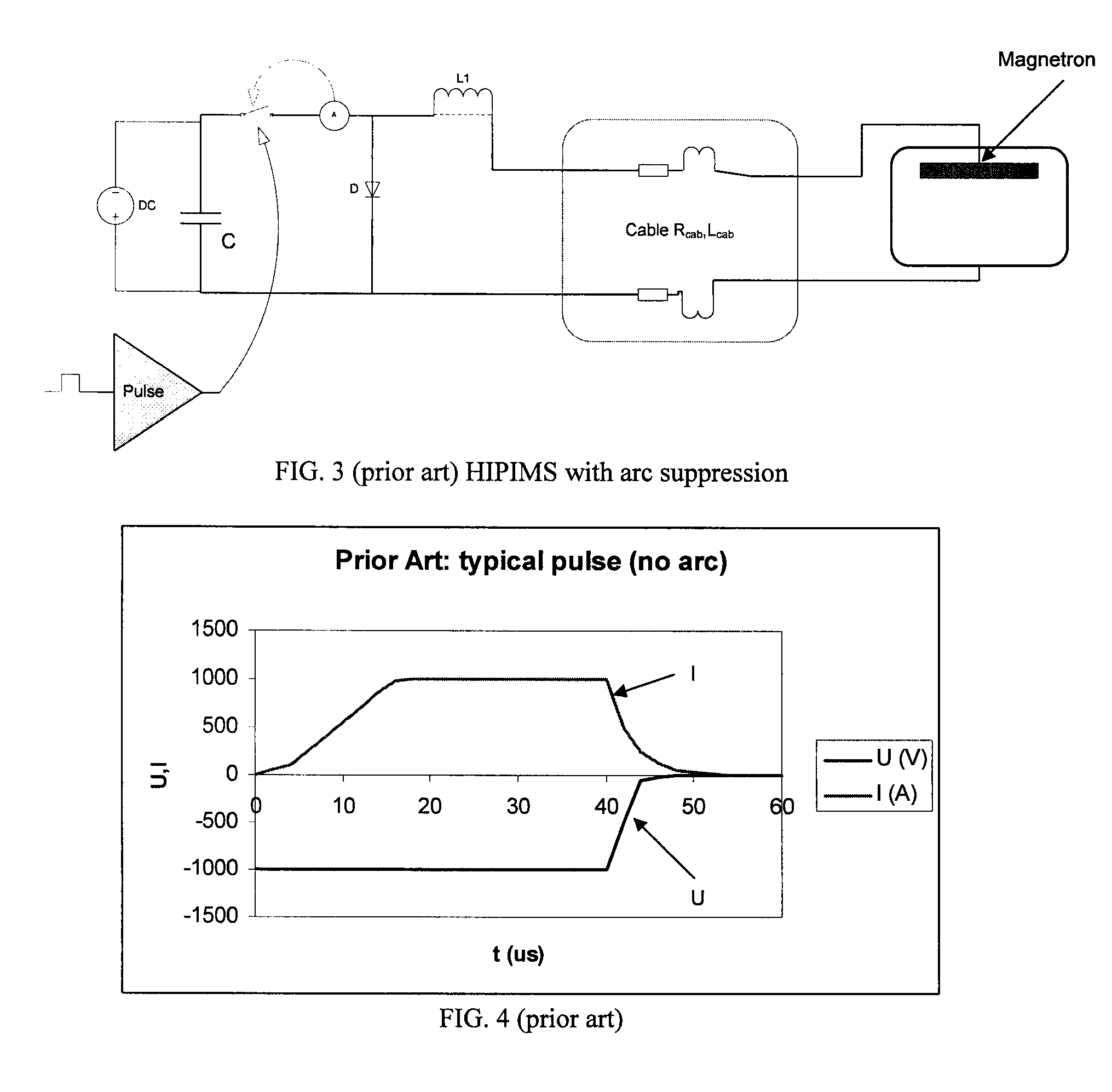Arc suppression and pulsing in high power impulse magnetron sputtering (hipims)
a high-power impulse magnetron and sputtering technology, applied in the field of high-power impulse magnetron sputtering (hipims), can solve the problems of long starting time of the magnetron current pulse (5 to 100 s), large and expensive capacitors and large capacitor dimensioned for high stored energy
- Summary
- Abstract
- Description
- Claims
- Application Information
AI Technical Summary
Benefits of technology
Problems solved by technology
Method used
Image
Examples
Embodiment Construction
[0042]Examples that incorporate one or more aspects of the present invention are described and illustrated in the drawings. These illustrated examples are not intended to be a limitation on the present invention. For example, one or more aspects of the present invention can be utilized in other embodiments and even other types of devices. Moreover, certain terminology is used herein for convenience only and is not to be taken as a limitation on the present invention. Still further, in the drawings, the same reference numerals are employed for designating the same elements.
[0043]In HIPIMS it is not commonly known to use fast switching with on-times below 10 μs. The example of FIG. 7 is designed based on measurements made at low frequencies (1 to 200 Hz) showing high rise times of current in μs, limiting shortest pulse on-times to about 10 μs and thus the maximum frequency to about 1 kHz, based on a duty cycle of 1%. The experiment in FIG. 6 showed a clear tendency to the possibility ...
PUM
| Property | Measurement | Unit |
|---|---|---|
| frequency | aaaaa | aaaaa |
| frequency | aaaaa | aaaaa |
| on-time | aaaaa | aaaaa |
Abstract
Description
Claims
Application Information
 Login to View More
Login to View More - R&D
- Intellectual Property
- Life Sciences
- Materials
- Tech Scout
- Unparalleled Data Quality
- Higher Quality Content
- 60% Fewer Hallucinations
Browse by: Latest US Patents, China's latest patents, Technical Efficacy Thesaurus, Application Domain, Technology Topic, Popular Technical Reports.
© 2025 PatSnap. All rights reserved.Legal|Privacy policy|Modern Slavery Act Transparency Statement|Sitemap|About US| Contact US: help@patsnap.com



